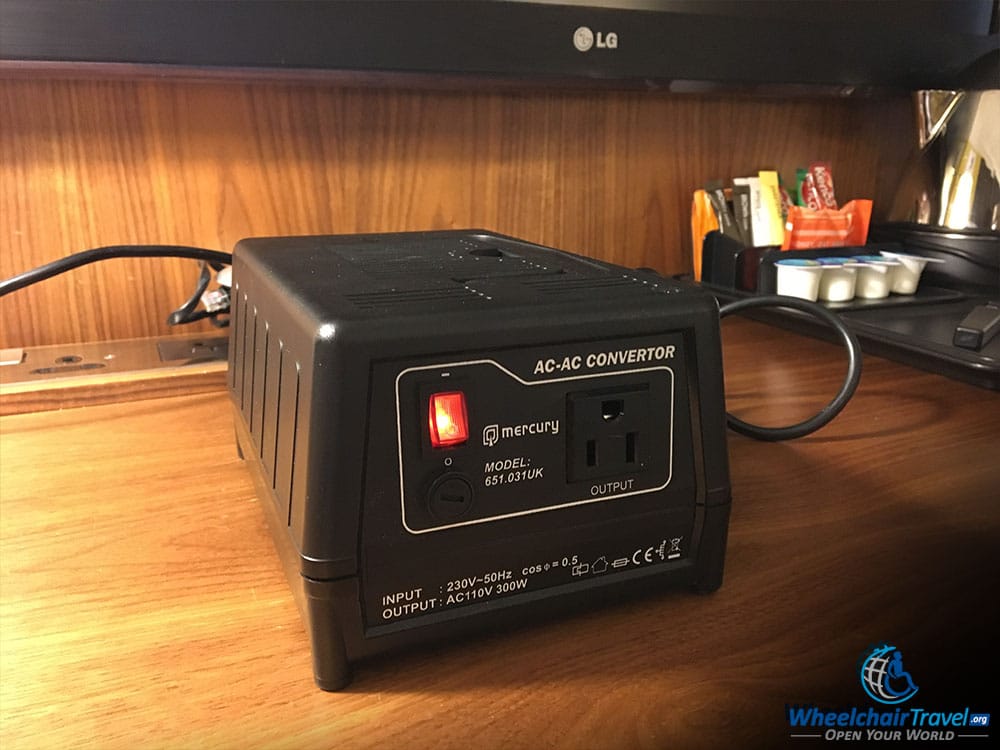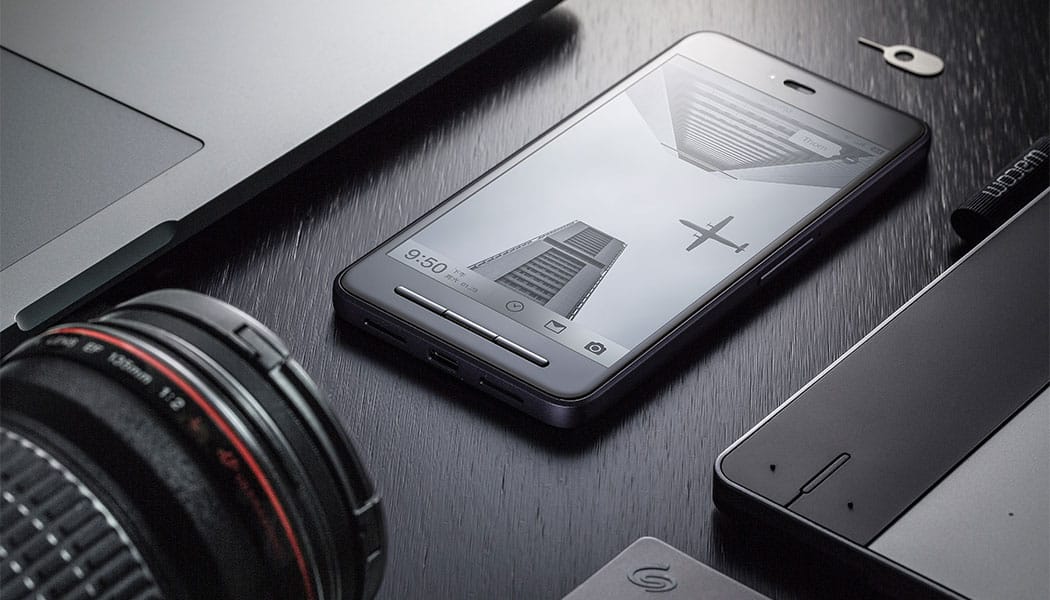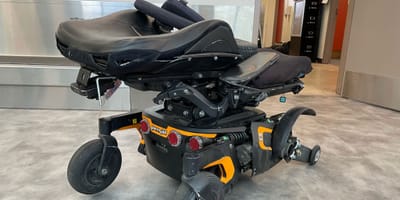The Department of Homeland Security has issued a ban on electronics in the airplane cabin, affecting passengers traveling on flights to the United States from eight countries in Africa and the Middle East. The United Kingdom has since announced a similar ban, per the BBC.

The directive, issued at 3 a.m. EST on March 21, must be implemented within 96 hours. It requires passengers traveling from select countries to place electronic devices larger than a cell phone in checked luggage. This includes laptops, tablets, e-readers, cameras, dvd players and electronic games. The directive may also apply to certain equipment used to aid in the mobility of travelers with disabilities.
The Associated Press first reported that the ban applies to “nonstop flights to the U.S. from 10 international airports serving the cities of Cairo in Egypt; Amman in Jordan; Kuwait City in Kuwait; Casablanca in Morocco; Doha in Qatar; Riyadh and Jeddah in Saudi Arabia; Istanbul in Turkey; and Abu Dhabi and Dubai in the United Arab Emirates.” This has since been verified by the U.S. Government. The airlines operating flights included in the ban are EgyptAir, Emirates, Etihad Airways, Kuwait Airways, Qatar Airways, Royal Air Maroc, Royal Jordanian, Saudia and Turkish Airlines. No U.S. air carriers will be affected.
The British Prime Minister’s office has confirmed a similar ban on in-cabin electronics, affecting flights to the United Kingdom from Egypt, Jordan, Lebanon, Saudi Arabia, Turkey and Tunisia. Noticeably absent from the U.K.’s list are Qatar and the United Arab Emirates.
Royal Jordanian was the first airline to break news of the electronics ban, in the following Twitter post:

RJ’s announcement revealed that “Cellular phones and medical devices needed during the flight are excluded from the ban.” As a power wheelchair user who will soon be traveling on a flight subject to the ban, I have been left with many questions and concerns.
Why is this happening?
The U.S. Department of Homeland Security has implemented the electronics ban in response to what it deems a credible threat to safety in air travel. From the DHS website:
The U.S. Government is concerned about terrorists’ ongoing interest in targeting commercial aviation, including transportation hubs over the past two years, as evidenced by the 2015 airliner downing in Egypt, the 2016 attempted airliner downing in Somalia, and the 2016 armed attacks against airports in Brussels and Istanbul. Evaluated intelligence indicates that terrorist groups continue to target commercial aviation, to include smuggling explosive devices in various consumer items.
Several reports now indicate that the United States will not be the only country to announce such restrictions on air travel, with others, including the United Kingdom, set to follow suit.
The electronics ban makes travel more difficult, if not impossible, for many with disabilities.
My Quantum Q6 Edge power wheelchair has an off board charger which is separate from the chair itself. I also travel with a power transformer, used to convert the higher electricity voltage in foreign countries to the 110V U.S. standard. Both qualify as “electrical devices” that will not be used “during the flight” and will likely be subject to the ban.

With the way airline luggage is tossed about by baggage handlers, it is not likely that either device would survive the trip. If they are damaged and rendered inoperable, I will be unable to charge my power wheelchair. Like many of you, I would be left completely immobile should my wheelchair’s battery run out.
Who pays for the replacement cost of damaged electronics? When I last replaced my wheelchair charger, the cost was $300 USD. Will the airline be responsible? What about my laptop, iPad, Kindle and camera? How can I possibly check these items, when the Montreal Convention has set the maximum liability for lost or damaged baggage at 1,131 SDRs (~$1,535 USD)? My laptop alone is worth more than that.
I sent three questions to the Department of Homeland Security.
Early this morning, when news broke of the electronics ban, I reached out to media representatives at DHS, with the following three questions:
- Will passengers be permitted to gate-check powered wheelchairs and mobility devices at the aircraft door, as described in/guaranteed by the Air Carrier Access Act, 14 CFR Part 382?
- Will passengers be permitted to carry fragile electronic wheelchair equipment, including off board power wheelchair chargers, power transformers (for the conversion of electrical current/voltage), power assist devices (for manual wheelchairs), and drive control devices (joysticks) onto the aircraft – even if they are not used during flight?
- Have the affected air carriers received specific guidance as to which types of electronic medical equipment will be allowed onboard the aircraft?
The DHS responded, not with answers, but with links to two pieces of guidance on their website: a fact sheet and FAQs on what are described as Aviation Security Enhancements for Select Last Point of Departure Airports with Commercial Flights to the United States.
After reading through these documents, I believe that the affected airlines may deny passengers the right of gate-checking powered wheelchairs, out of fear of breaching the DHS directive.
While essential medical equipment such as respirators, CPAP machines, portable oxygen concentrators, etc. will still be allowed in the aircraft cabin, it is unclear whether the medical exemption will apply to fragile electronic mobility equipment and accessories. These types of equipment include wheelchair chargers and joystick control devices, which many carry-on to prevent damage.
I suspect with great certainty that equipment not designed for use inflight will be denied for carry-on at foreign airports, as they have not been expressly permitted in the order sent to airlines.
Travelers should be given more advance notice.
My next trip that will be affected by this ban won’t be for another week, giving me an opportunity to prepare for the new policy. But, what about travelers who are abroad and traveling right now?
My checked bag is a soft duffle that can be slung over the back of my wheelchair. No electronic device would be safe inside of it, except as a carry-on. For many wheelchair users like myself, traveling with a hard suitcase is just not possible. This will limit my ability to bring equipment like a camera and my laptop computer – necessities for a travel blogger.
As I am not privy to U.S. national security intelligence, I won’t question the government’s institution of precautionary measures. But, I will criticize the quick roll-out and the extreme burden this places on travelers of all abilities, including U.S. citizens. And, let’s be honest – would you really feel comfortable checking a $2,000 laptop and critical mobility equipment in a duffle bag at Cairo International Airport? That’s what I’ll be forced to do next month, and it has left me with a great deal of concern and many more questions than answers.
Are you traveling on an affected flight in the coming days or weeks?
If your travel plans will be affected by this electronics ban, please come back and share your experience in the comments below. People with disabilities need to know what to expect and how to prepare for travel under this burdensome regulation.















